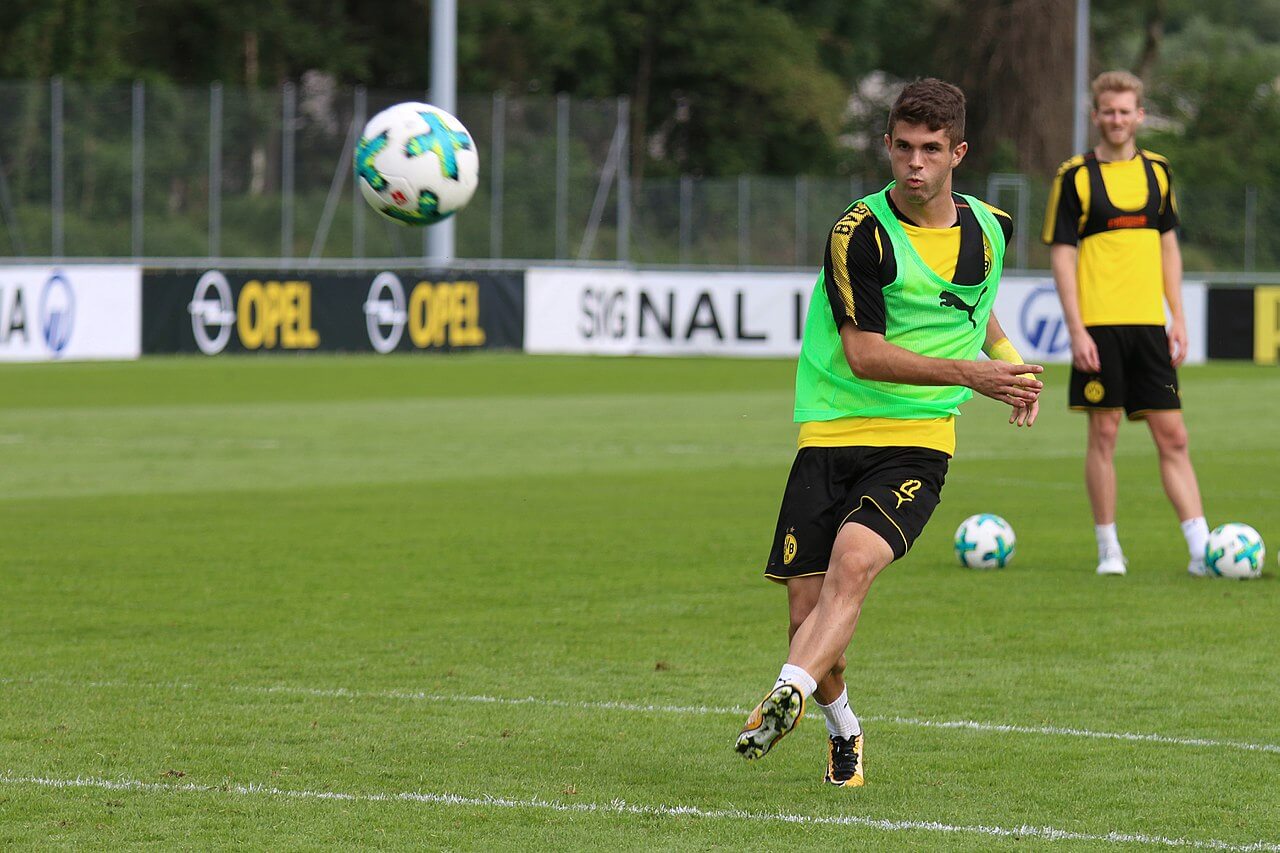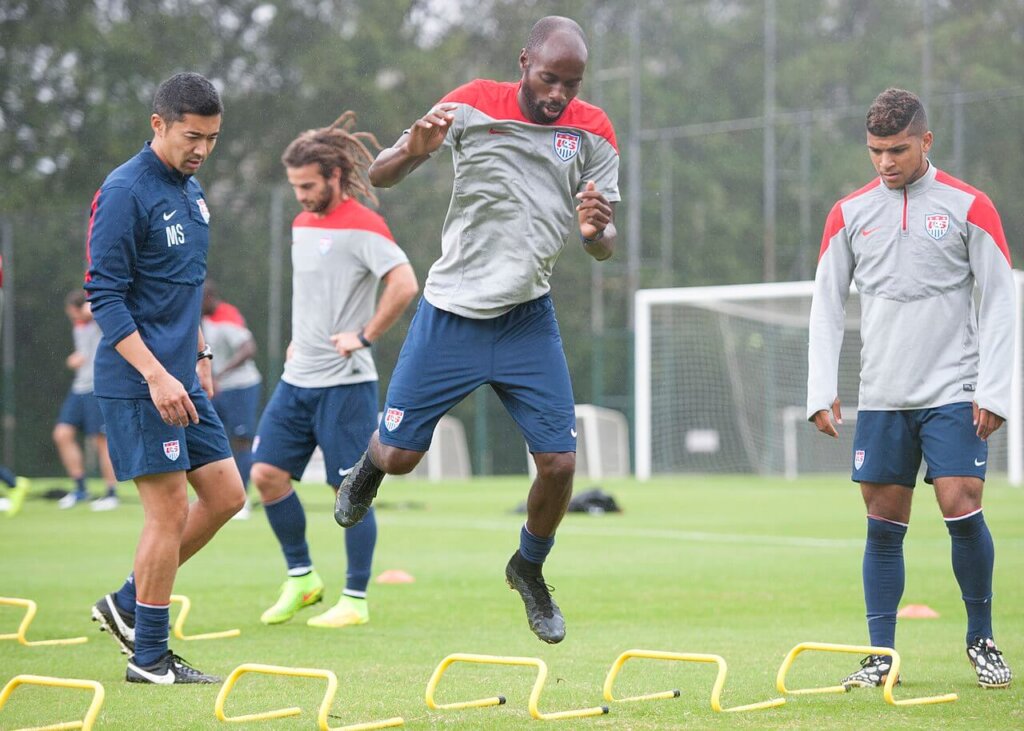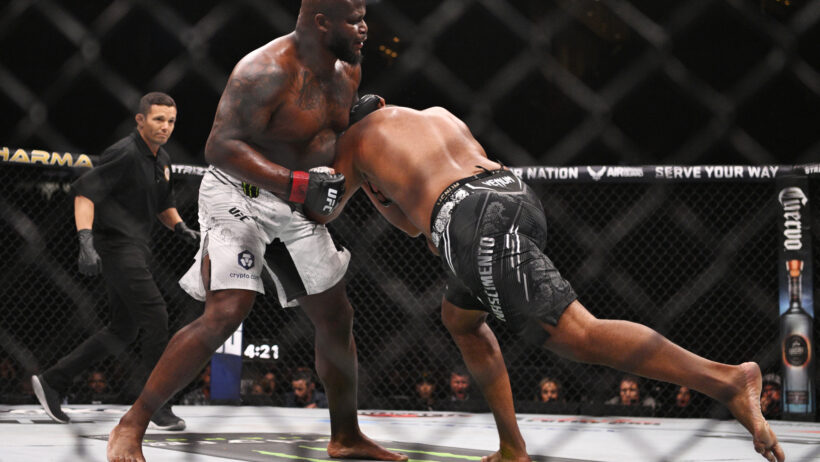Will USMNT Bounce Back? 2022 World Cup Odds & More
By Alex Kilpatrick in Soccer News
Updated: January 17, 2018 at 9:38 am ESTPublished:

As I’m sure you’ve heard, the United States will not be represented by its men’s national team at the 2018 FIFA World Cup in Russia. This is an obvious disappointment for a nation of 300 million that devotes itself feverishly to sports, but understandable for a country with poor support for soccer at the grassroots level. The popularity of men’s soccer is trending up in the US, but the fact remains that it’s either the fourth or fifth-most important sport in the life of the average American boy.
Contrast the state of the men’s national team with the utterly dominant women’s team (which has won three of the seven Women’s World Cups and never finished worse than third) and you begin to realize that it’s a numbers game. According to a 2008 study out of Brooklyn College, 92-percent of universities with intercollegiate sports programs had a women’s soccer team, which was just six-percent behind basketball, the most popular women’s sport. On the men’s side, while there are over 350 Division I basketball teams, there are only 207 Division I men’s soccer teams, which is a difference of over 40-percent.
The pay-to-play format for youth soccer is at least partly to blame for the generalised failure of the US to produce and maintain a top-level men’s team. It’s a barrier to entry that excludes a massive amount of potential talent, so much talent, in fact, that foreign clubs are establishing satellite academies to exploit it.
So what’s next? Where does the men’s national team go from here? To start, it will need to find a new man to run the show now that Bruce Arena has stepped down.
The Next USMNT Manager
Arena was allowed to resign three days after the loss to Trinidad and Tobago that officially ended the team’s World Cup hopes. Some objected to his resignation, not because they felt he should have stayed on, but because they felt he should have been fired, or launched into the sun, or led blindfolded into a tiled room with a drain-hole in the floor. Many critics contend that US soccer is, and has been, heading firmly in the wrong direction for years now, and that the recent World Cup failure is merely an artful reminder of everything that’s wrong.
A big point of debate is whether the next coach should, or shouldn’t be, an American. On one hand, there aren’t a lot of top-level American coaches wandering around, and finding one with the experience of some of the international coaches might be impossible. On the other hand, the history of US soccer is littered with snake-oil salesmen with little more than some wonky ideas and an accent, and developing American coaches needs to be as high a priority as developing American players.
Odds the next USMNT manager is …
- an American: 9/11
- not an American: 11/9
- Jurgen Klinsmann: 100/1
Promising Youngsters
Serious development of players at the international level happens in Europe, and some of America’s most promising teenagers are developing nicely across the pond. Currently starring at Borussia Dortmund, Christian Pulisic is the second-most valuable U20 player in the world. He is the kind of once-in-a-generation talent that can elevate a national team to international relevance, and if he’s eventually paired with other players from top European clubs, he and the United States will shine.
There may be help on the way for Pulisic. The U17 team, comprised of the players who will replace aging stars like Clint Dempsey (34) and Chris Wondolowski (34), is promising. Timothy Weah is a global talent, a strong performer on Paris Saint-Germain’s U19 team, and the son of 1995 Ballon D’Or winner George Weah. Josh Sargent and Andrew Carleton are both promising prospects, as well, with the latter starting to get more and more experience in MLS. The U17 squad is through to the quarterfinals of the U17 World Cup, an impressive performance already.

Ageing Veterans
An oft-commented on feature of the USMNT is its wealth of older players. Experience was (arguably) a benefit for the 2014 squad, but that was when Tim Howard was 35 and wily. Fielding a squad with not one but two 38-year-old goalies isn’t a recipe for success in a sport that extracts the best from its athletes in their late twenties. Damarcus Beasley has already set the record for World Cups played in; maybe the prudent thing to do is let it stand at four.
- Odds Tim Howard plays on the USMNT in 2022: 6/1
- Odds Damarcus Beasley plays on the USMNT in 2022: 3/1
- Odds Clint Dempsey plays on the USMNT in 2022: 1/1
World Cup 2022
The United States should make the World Cup in 2022. They play in the easiest qualifying region in the world, and needed a spat of remarkable incompetence coupled with a symphony of bizarre twists to miss out on 2018. If we were to simply replay the 2018 qualifying with the same rosters, the US would likely get through. With four years, some time to reflect, a gym membership, and a couple trips through the self-help aisle, US soccer should be in a better position for 2022 qualifying.
Or they could bring back Bruce Arena, or someone like him, commit to the pay-to-play format for youth soccer, and discourage promising youngsters from going abroad to develop their skills at the highest level. That would be a surefire way to keep the United States perennially behind Costa Rica and Mexico, and thereby struggling to qualify every cycle.
- Odds USMNT qualifies for 2022 World Cup: 1/3
- Odds USMNT makes it out of the group stage of the 2022 World Cup: 3/2

Golf, Tennis & College Football Writer; Jr. Editor
Alex studied political science in university but spent most of that time watching college football. He covered sports betting for SBD from 2017-2019. Avid tennis player, golf nut, and motorsports nerd.



